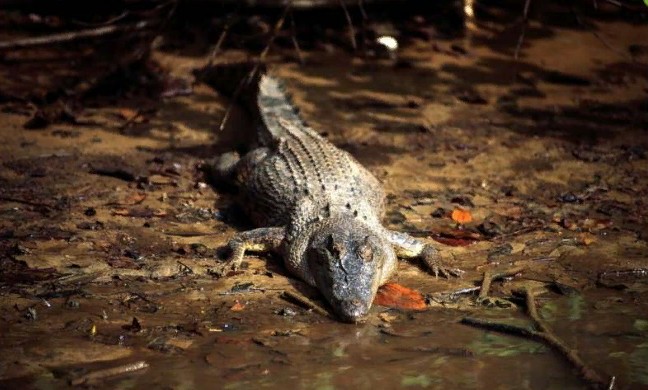According to a new study done by Cairns Hospital and the Kirby Institute at UNSW Sydney, snake, dog, and cat attacks were responsible for the majority of animal bite hospitalizations in tropical Queensland.
Simple, old-fashioned wound care and early medical review are the most crucial components of patient management, whether you’ve been bitten by a snake, crocodile, shark, wallaby, cat, or dog.
The study, which was published in the International Journal of Infectious Diseases and was one of the largest of its type, looked at almost 1,700 patients who were brought to Cairns Hospital after being bitten, stung, or otherwise injured by an animal.
Dr. John Vardanega, an Infectious Diseases Registrar at Princess Alexandra Hospital and the study’s first author, notes that “about half of all Australians will be bitten by an animal during their lifetime,” and that “animal bites commonly get infected.”
Current Australian guidelines recommend antibiotics to prevent infection, although infections in places like Far North Queensland may be caused by rare tropical bacteria that are resistant to first-line antibiotics.
“A further difficulty is that many bites occur hundreds of kilometers from medical care in tropical Australia. Patients may lose a limb or worse if we don’t catch infections early, “Dr. Vardanega agrees.
The researchers wanted to learn more about animal bites in tropical Australia and see if Australia’s current antimicrobial wound treatment standards are appropriate for tropical environments.
They discovered that a diverse range of creatures, including snakes, sharks, crocodiles, bats, dingoes, and even wallabies, were responsible for the hospitalizations. Domesticated animal bites, such as those from dogs and cats, were also common.
Dr. Vardanega remarked that young men were overrepresented in the group, which could be “explained by occupational exposure and a predilection for riskier behavior.”
Men were bitten by crocodiles in every case, but women were three times more likely to be bitten by cats.
There were two types of patients, according to Dr. Josh Hanson, a senior research associate at the Kirby Institute and an infectious disease physician at Cairns Hospital.
The first group consisted of people who had been bitten by a potentially poisonous animal, such as a snake, or whose encounter had resulted in significant trauma.
Over 96 percent of these patients were admitted to the hospital within eight hours of contact.The majority of these folks didn’t require antibiotics, and only a small percentage got wound infections, “he stated.
People who appeared more than 24 hours after their interaction made up the second group. Over 85% of those surveyed had wound infections or were on the verge of getting one.
Because the tissue damage caused by the bite was now irreversible, these individuals faced an increased risk of mortality, ICU hospitalization, amputation, and other sequelae. ”
Cat bites, maybe unsurprisingly, were the most likely to become infected, according to Dr. Hanson. “Despite the fact that cat bites can penetrate deep into the tissues, victims generally dismiss the wounds, and over 75% of cat bites present more than 24 hours after the injury, by which time infection has commonly developed.”
Only 12 cases were found in which antibiotics prescribed by national standards failed to kill the isolated bacteria, and none of the 12 cases resulted in a major consequence. The study’s three deaths were all caused by snake envenomation, while the majority of the other serious consequences were caused by major tissue injuries.
Antibiotics, according to our findings, are likely to have a limited impact in preventing serious consequences from animal bites.Patients who present for medical assessment early are more likely to have positive outcomes, “Dr. Vardanega agrees.
The best way to avoid contracting an infection is to avoid being bitten.
Dr. Simon Smith, a fellow researcher and infectious disease physician at Cairns Hospital, said that while the hospital’s clinicians were highly skilled at treating patients who had had a bad encounter with the Far North’s dangerous creatures, there were simple steps people could take to avoid ending up in a hospital bed.
“If you come across a snake in the outdoors or in your backyard, give it plenty of room and let it escape.
Please notify a local snake catcher or the Queensland Parks and Wildlife Service if you are concerned that it is not moving on.
If you’re going for a swim at the beach, Surf Life Savers recommends swimming within a marine stinger enclosure or wearing a full-body lycra stinger suit. You’ll have a much lower likelihood of being stung by a box jellyfish or an Irukandji jellyfish if you do this.
Also, keep in mind that no stream in northern Queensland can ever be called crocodile-free, so be cautious while entering crocodile areas.
If you are bitten, seek medical attention right away. Instead of ‘once in a while, crocodile,’ make it snappy! ”
Animal-related injury presentations at Cairns Hospital: 2013–2020
-
- Snake—734
- Dog—508
- Cat—153
- Jellyfish—129
- Fish—35
- Other terrestrial (bird, bat, rat, leech, monkey, dingo, goanna, guinea pig, wallaby, chicken, goat, kangaroo, monitor lizard, possum, parrot)—34
- Other aquatic (crayfish, starfish, sea urchin, crab, prawn, sea snake, turtle, eel)—34
- Stonefish—22
- Cattle—20
- Horse—19
- Stingray—17
- Pig—17
- Shark—13
- Crocodile—10





